Welcome to the Boleskine Biodiversity Group Page!
The biodiversity group first got together early in 2023 and got off to a flying philosophical discussion as to what we were about and how we can support nature restoration in our area, our primary aim and ambition. We know we are in a make or break position with the nature and climate crisis. We would therefore like to carry out meaningful projects that can support the nature and habitats on our doorstep, and hopefully in a small way help to contribute to efforts to try to halt and reverse this decline.
Initially we are looking to do some activities as a group centred around creating and improving wildlife sites and nature corridors, including creating wildflower meadows, removing invasive species and creating ponds and wetlands where possible.
We know that people in the community are always spotting interesting species straight out the back door, we would love to hear all about what you see and encourage everyone to use the App https://irecord.org.uk/ as a way to record nature data, such as sightings of red squirrels, birds, butterflies, plants etc. The date gathered through this will help build a strong baseline for our area and use that information to look at where there may be opportunities to support our important local ecology.
You can read about the projects we are currently working on by clicking on the links below. We will also update you shortly on our wild flower planting at The Wildside Centre.
Current Biodiversity Projects & Events
| Swift Talk by John Parrot | Welcoming swifts into our skies |
| Skunk Cabbage Control Project | Sitka Spruce Removal |
| Why Not Scotland? | Light Pollution |
If you would like to be involved in any of the Biodiversity projects then please visit the groups Facebook page
Light Pollution
Apart from moonlight and starlight and the aurora borealis (the northern lights) the natural state of the countryside at night should be darkness. When I came to live here over 40 years ago, I could stand outside the house at night and experience the wonderful shifting colours of the aurora borealis and at other times our magnificent starry winter skies. Alas, unless I travel some distance, this is no longer possible due to light pollution from the conurbations around Loch Ness and to local light pollution from domestic dwellings. This pollution travels further in rural areas than in towns.
It is well known that light pollution has a disruptive effect on human sleep patterns because light inhibits the production of the hormone melatonin which is needed to regulate our circadian rhythms (our biological clock) that tells us when to work and when to rest. Melatonin is produced in response to the dark. Continual lack of sleep can lead to serious health problems. You will have seen advice that you should switch off computers, mobile phones and televisions well before bedtime because they all emit blue light that makes it harder for people to fall asleep naturally. LEDs, although energy saving also emit blue light. According to Nick Dunn, founding director of the Dark Design Lab. at Lancaster University, 83% of people in the UK now live under a light polluted sky.
I am concerned with the effects that light pollution has on the environment, on nocturnal animals, birds, plants and particularly insects. Every living thing needs light and dark.
The following are some examples of the harm caused to our wildlife by light pollution: -
In a UK study in the 2020s by Butterfly Conservation, Newcastle University and the UK Centre for Ecology and Hydrology, it was found that there were 52% less moth caterpillars in hedges under LED streetlights and 42% less on grass verges under those lights as compared to unlit hedges and verges. This has implications for the number of moths and also for birds etc, that feed on caterpillars and moths.
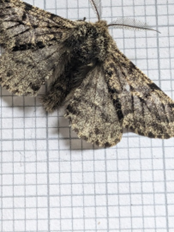
Brindled Beauty Moth
Garden birds are affected by bright lights and may have less energy because lighting confuses them into singing earlier and roosting later. Light pollution is a worldwide problem especially for birds that migrate at night. Birds use natural cues to navigate, such as stars and the earth’s magnetic field, but light in the wrong place at the wrong time can cause migration to start too early or too late. Bright lights can lure birds off course and in trying to regain the correct path they become exhausted. The tall brightly lit buildings in cities (especially in the USA) attract migrating birds and many collide with the buildings and die.
As with humans, bats and owls’ circadian rhythms are disrupted by artificial light. They are adapted to hunt in the dark. With the distraction of lighting, owls can find it difficult to find prey. Light can confuse roosting bats so that they are unsure when is the optimum time to hunt insects with the result that they miss out on food. Ground dwelling creatures are mostly nocturnal and Bug life, (the Invertebrate Conservation Trust) has found that beetles can be disorientated by lights. Even plants can be baffled by artificial light and open or close at the wrong times for pollinators. Butterfly Conservation tells us that moths have declined by 33% since the 1960s. Bug life reports that flying insects declined in Scotland by 65% between 2021 and 2024. There are many causes for this decline: air pollution, climate change, pesticide use and loss of habitat, but light pollution is a factor too. Day flying moths have hardly declined at all in 30 years.
Nocturnal moths like to have their backs to the brightest light in the sky to keep on a level flight path. They are impacted by artificial lights to the extent that they may crash into them and die. They are directed away from their own food. They fly erratically and make themselves more visible to predators such as bats. Once bats suss out that there is a source of flying insect food around artificial lights, they will return time and time again so that in such places insects will be depleted.
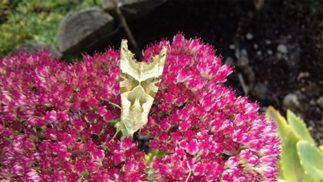
Angle Shades Moth
Because insects are relatively small, people tend not to realise their importance as pollinators and food. Fish, bats and insect eating birds are all dependent on them. Our whole eco-system depends on insects. If we lose them, we are in deep trouble. Humans, birds, bats, fish etc. would starve. The 2020s have seen various books by eminent scientists about insect decline. This is so serious that they are using words like ‘Crisis’ and ‘Apocalypse’.
I have chosen to write about light pollution because, of all the causes of biodiversity decline, it is one over which we have control. If you care about the decline here are some steps that could be taken to mitigate the effects: -
- Encourage more local authorities to install downward facing and insect friendly streetlights.
- On domestic properties, direct light beams downwards so as not to cause glare.
- At known bird migration times, switch off lights in tall buildings.
- Use outdoor lighting only when absolutely necessary and as far as possible not during the hours of darkness. Timers and motion sensors can ensure lights are off when not required.
- Close curtains and blinds at night to prevent light leaking outside.
Although we rarely see our nocturnal wildlife, we should be mindful of them and their right to a natural life undisturbed by light pollution.
Valerie Weir - member of Boleskine Biodiversity Group
References:
- Butterfly Conservation .org
- Dunn, Nick Director of Dark Sky UK – Article in Issue 237 Summer 2024 of ‘Garden Organic’- ‘The Night Shift’.
- Fraenkel, Amy Executive Secretary Convention on the Conservation of Migratory Species of Wild Animals-UN Chronicle -Article of 6th October 2022 –‘The Growing Effects of Light Pollution In Migratory Birds’.
- Goulson, Dave Professor of Biology, University of Sussex, specialism in ecology and conservation of insects- Book 2021 ‘Silent Earth- Averting the Insect Apocalypse’.
- Milman, Oliver Environment correspondent for ‘The Guardian’ newspaper – Book 2022 ‘The Insect Crisis’.
- Thompson, Ken Retired plant ecologist formerly of Sheffield University. Writes science-based gardening books – Book 2020 ‘Notes from a Sceptical Gardener’.
Swift Talk by John Parrot
On the 15th of June, John Parrot conducted a talk on swifts and the swift project at Errogie Church. If you missed the event and the talk, you can now watch it on SFCT TV or simply view it HERE!
If you are interested in learning more about the swift project, please contact John Parrott by emailing johnparrottca@gmail.com or Sarah by emailing sarah@sfctrust.org.uk
Skunk Cabbage Control Project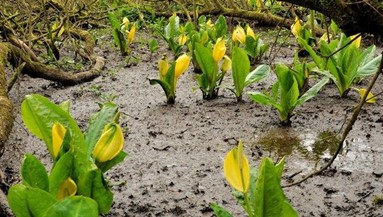
Boleskine Environmental Network initiated a project in 2020 to control skunk cabbage around Loch Mhor.
American skunk cabbage Lysichiton americanus is native to western North America. It is an Invasive Non-Native Species (INNS) in the UK which can establish rapidly in suitable sites and form dense colonies which quickly out-compete our native flora.
Populations are now present in a number of locations scattered across Scotland, having escaped from botanical collections and private gardens and naturalised in the wild, particularly in wet woodlands and boggy areas. Wet woods are a relatively scarce and sensitive habitat which supports a number of rare plants, so the impact on biodiversity can be significant. Unfortunately several skunk cabbage colonies are present around Loch Mhor. Each of these is a fresh nucleus for further expansion, and without control, there is potential for exponential growth in the population. At least three of the sites where it is present hold small numbers of Coralroot Orchid Corallorhiza trifida, a rare plant found in wet sites in north Britain which would likely disappear if skunk cabbage was allowed to spread further.
Initial funding was raised from the Community Council and local landowners to pay an experienced contractor to treat the largest concentrations. Volunteers undertook the surveying and monitoring, and tackled the smaller outlying colonies. There was a noticeable decline in all colonies following the first season’s efforts. Since then control has continued each year and we are seeing fewer and fewer large plants at the known colonies. However, each colony will have a large seedbank and as seeds can remain dormant for many years, we will need to keep monitoring and removing small seedlings over the next few years until the seedbank is depleted and no more seedlings appear.
For the control work to be effective, we need to make sure we have found and removed every skunk cabbage colony present, otherwise when control stops the plants will start to spread again. Please do get in touch (alison.phillip3@gmail.com) if you are aware of any skunk cabbage colonies or if you would like to help us stop its spread around our community.
Thanks go to the local landowners who have provided support/funding and enabled access to control colonies around the loch and to the community council for funding.
Why Not Scotland? - Film Screening Event!
The Biodiversity Group are hosting an event on the 15th June at Errogie Church.
From 18.30pm everyone will be welcome to come along and listen to a talk about the upcoming Swift Project. John Parrott, (Errogie) will be giving the talk on swifts, which will be followed by the screening of the film produced by ‘Why Not Scotland’.
Across mainland Europe, nature is making a dramatic recovery – could Scotland be next?
The compelling story of Flo, a young Scot, as she discovers #rewilding across Europe, prompting her to ponder the potential for a similar revival in Scotland.
More info can be found at https://www.scotlandbigpicture.com/why-not-scotland
The event will be free entry, but any donations would be very welcome.
Popcorn and drinks will be available on the evening.
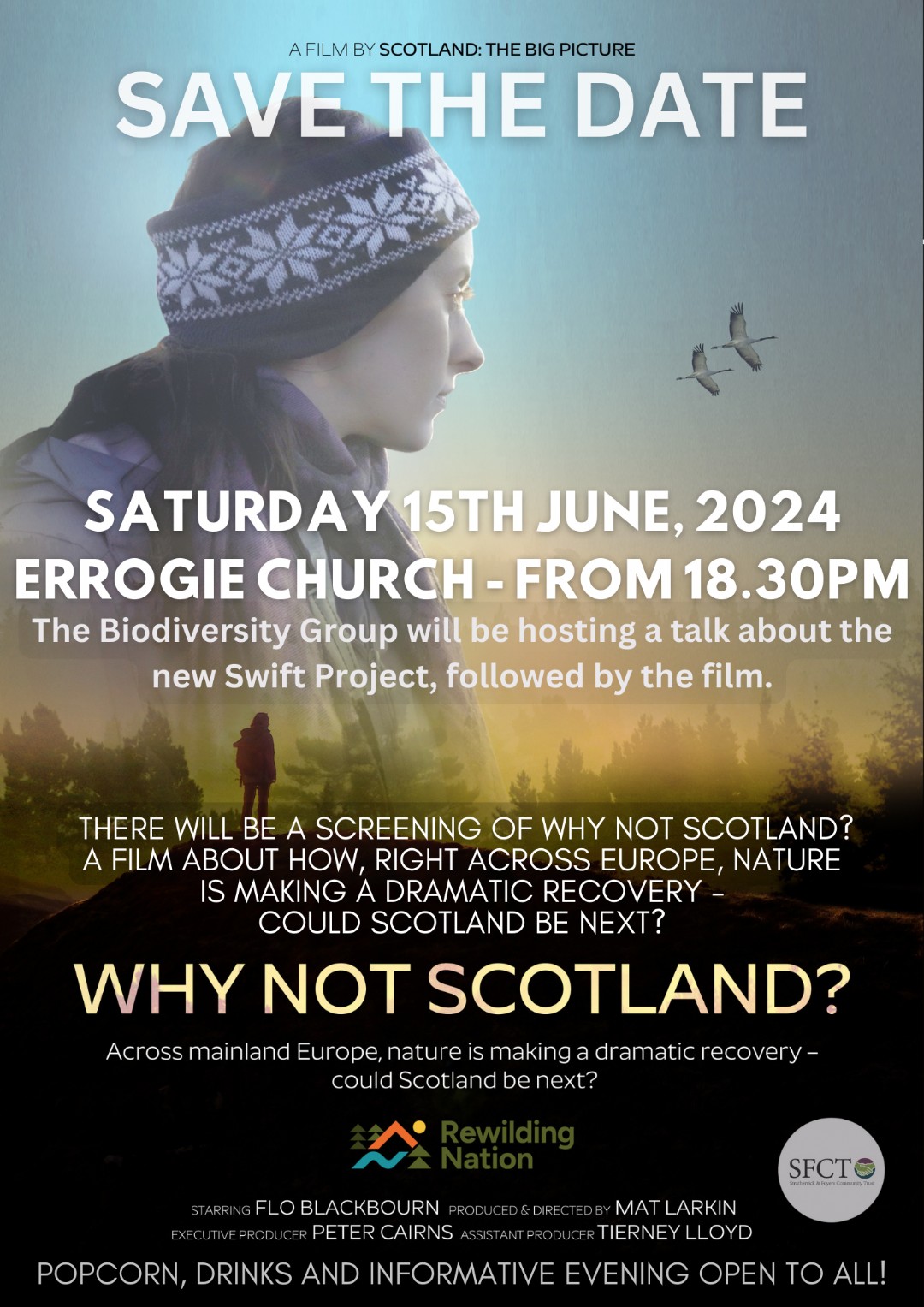
Welcoming swifts into our skies!
May 2024
Swifts are very special birds, quite unlike any other. For many of us, the sight and sound of a party of swifts flying at great speed over our towns and villages is the epitome of a perfect hot summer’s day.
Swifts spend almost all of their lives in the air, only coming to land in order to build a feather-lined nest and bring up a family.
They spend the winter in Africa and arrive back in Scotland in May, announcing their return to breeding sites with their spectacular flight displays and high-pitched calls.
Swifts mostly choose to nest in buildings, especially old houses and churches, where there are suitable cavities.
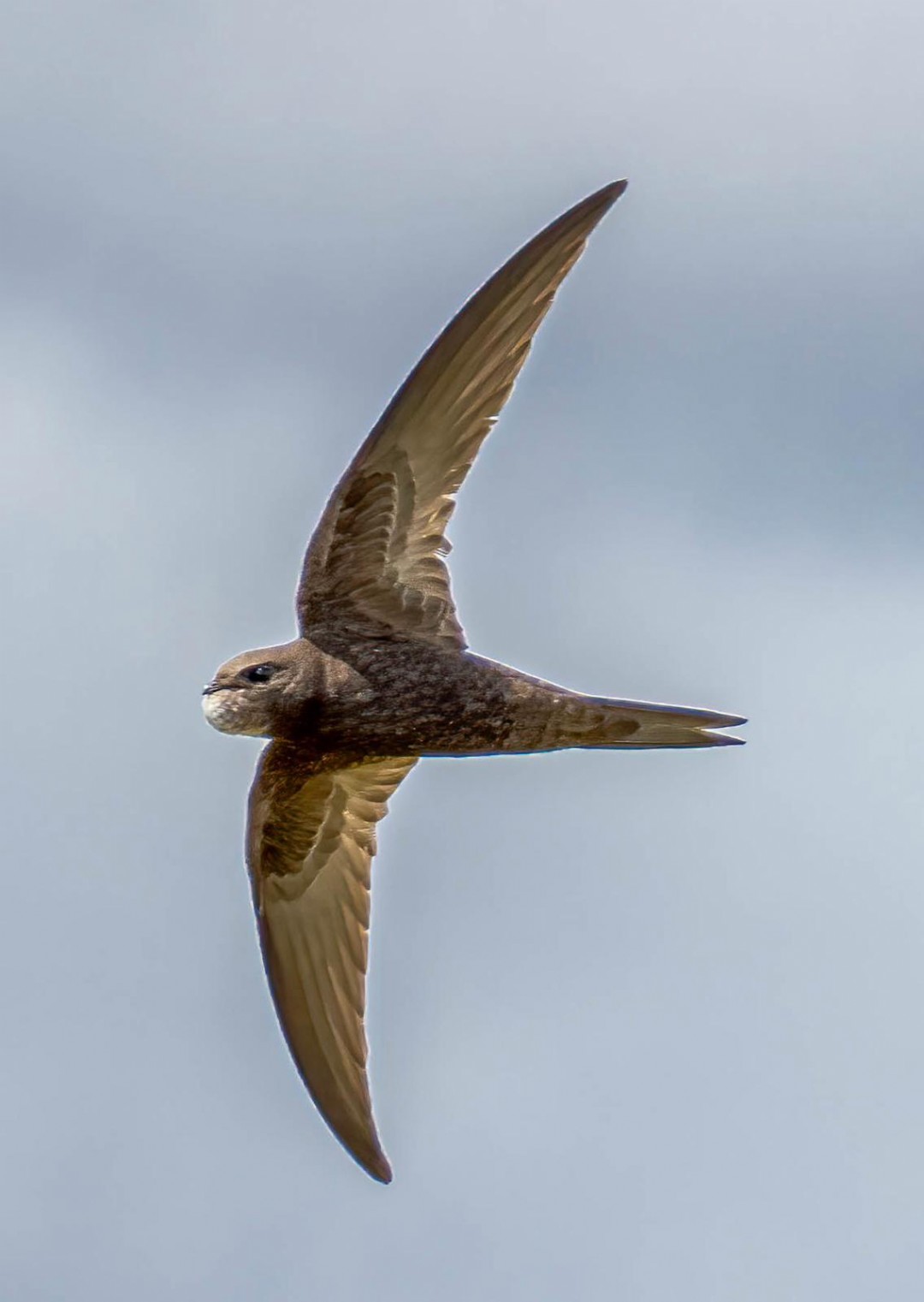
indicating that it is hunting to provide food
for young) © Roger Hardie
By August, they have reared their young and are already on their way back south … leaving us, their hosts, to eagerly await their return next spring. It is almost as if they bring summer with them. Let us hope they bring us a good summer this year!
Sadly, Swifts have declined in UK by over 50% in just 20 years, and are now classed as a Red Listed Species. So many species are suffering a steady decline, it is hardly surprising that Swifts are among their number.
But for swifts, another factor is compounding their plight: there are fewer and fewer places to nest.
The good news is that Swifts are one of the few endangered species that individuals and communities can really help, either by creating access to existing cavities or installing nest boxes.
Communities around the world are discovering they can help swifts by incorporating nesting cavities into new buildings and putting up next-boxes.
The biodiversity group, working alongside Boleskine Environmental Network and led by Errogie residents, are putting together a project to encourage swifts to establish more breeding colonies in the strath.
With the support of the Stratherrick & Foyers Community Trust and a band of enthusiastic volunteers a pilot project is set to be incubated in Errogie.
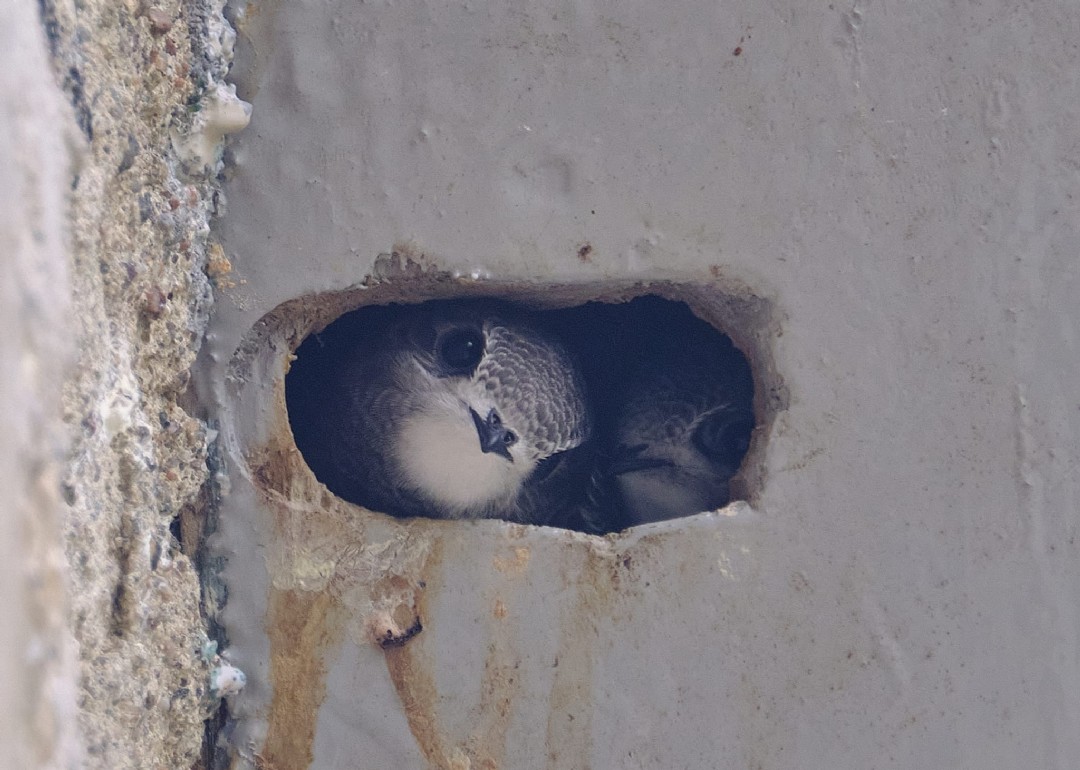
So, what’s the plan?
The first stage of this project is to build and install a few specially-designed nest boxes on buildings in Errogie.
One of the most promising candidates is the Errogie Church. There is already a small swift colony in Errogie, at The Old School, only a stone’s throw from the Church, and it is anticipated that this attractive old building will also prove attractive to swifts.
Swifts readily take to externally-fitted nest-boxes made in a variety of materials.

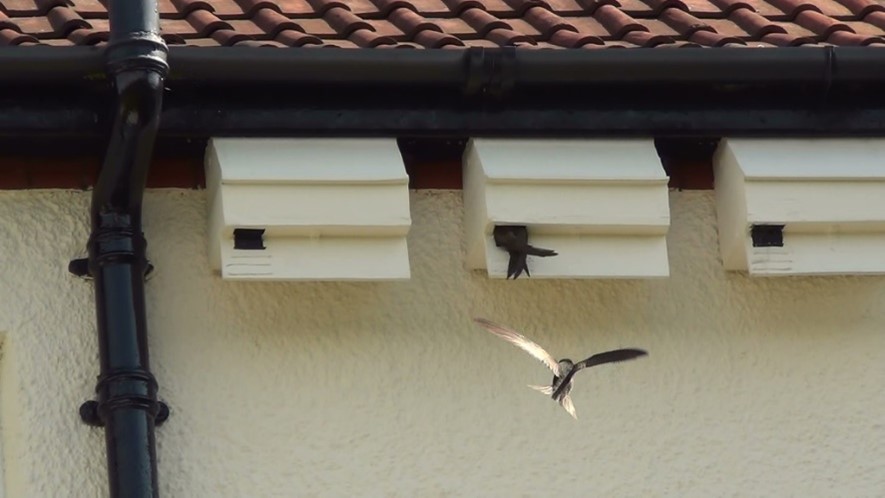
With the support of the Stratherrick & Foyers Community Trust, the project will run a workshop to help members of the community build a number of nest-boxes. Some of these will be installed on the Church. The remainder will be offered to householders in the strath who are interested in hosting a family of swifts.
Swifts are attracted to existing breeding colonies, so a small speaker will be placed near the boxes to play the right sounds. This will encourage prospecting swifts to investigate the boxes and hopefully, in the course of time, take up residence.
There are many other suitable locations in the strath, and the project would like to help other house-holders set up their own swift boxes. The project will be able to advise on the best places to site them and share knowledge and resources to help you support nature in a direct way.
If you interested in helping the project in any way, do please get in touch with Sarah at sarah@sfctrust.org.uk of John at johnparrottca@gmail.com.
A few facts about swifts …
- Swifts feed, drink, sleep and mate on the wing!
- Swifts are the fastest birds in level flight, reaching an impressive 70mph!
- Swifts are masters of the air, but there is a downside…
- If Swifts should be so unfortunate as to alight on the ground, they are unable to take off again
- Swifts are summer visitors to the UK; they spend their winters in Africa, migrating 3,400 miles TWICE every year … re-fuelling along the way
- Swifts typically return to the same nesting site each year, where they renovate their nests, lay and incubate their eggs and raise two young
- Swift chicks have to learn to fly as they emerge from the nest, before they reach the ground!
Look out for a talk about the Swift Project at Errogie Church on the15th June 2024. There will also be a screening of Why Not Scotland? a film about how, right across Europe, nature is making a dramatic recovery - could Scotland be next?
Popcorn, drinks and an informative evening open to all!
Sitka Spruce removal
March 2024
Why are the Biodiversity Group removing Sitka Spruce near Ault na Goire?
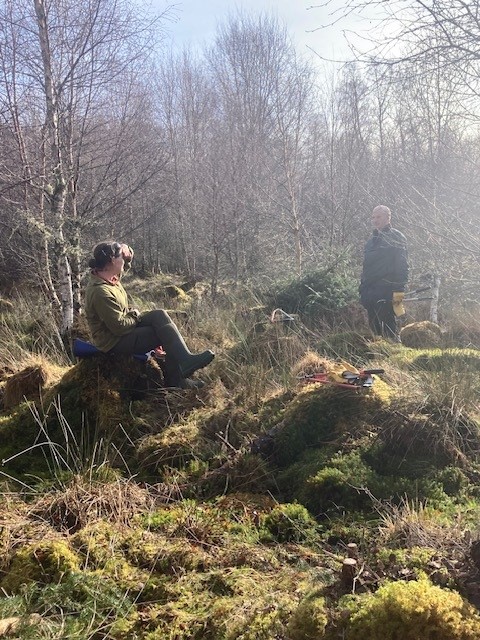
The Biodiversity Group are working to remove the smaller Sitka Spruce regeneration within an area owned by Forest and Land Scotland near the Ault na Goire. The purpose of this is to let native woodland and wetland habitats thrive along with butterflies, dragonflies and other wildlife. If the Sitka is not removed soon, it will likely outcompete the native birch as it grows taller and can shade out other species.
Sitka Spruce is an evergreen conifer native to the northwest of North America where it can grow up to 100m tall. It was introduced to Britain in 1831 and since has become the most commonly grown tree in the UK, accounting for over 50% of commercial planting. Sitka grows quickly in our climate and the timber is used for a variety of purposes from paper pulp to building material. This fast growth means it can play an important role in reducing the reliance on imported timber products from abroad as part of a sustainable and well managed timber industry.
Although Sitka Spruce is an important and biodiverse habitat in its native North America, it is less so in Scotland when compared to native woodland. This is because it has not evolved with our native plants and animals and is generally grown intensively as a commercial crop of even aged trees that will be harvested within 40-70 years (the natural lifespan of a Sitka Spruce can be over 600 years and natural spruce forests have a variety of different aged trees). At its worst these plantations can be seen on deep peat where the trees generally grow poorly, unless the peat has been heavily drained and fertilized. This occurred a lot in the 1960’s and 70’s when there were grants provided specifically to plant up what was considered to be ‘waste ground’. We now know that this has damaged important peatlands, and their associated biodiversity and caused the continuing release of climate change gases stored in the peat.
Dense stands of Sitka Spruce do not allow light through the canopy and if you compare the growth of other species under a canopy of Sitka Spruce with that of an ancient woodland such as Scots Pine stands in Glen Affric, or Atlantic oak woodland in the west you will notice a significant difference in the ground layer plants that grow below the tree canopy. That is not to say these plantations are devoid of life in Scotland, some species do live there, but mostly these are generalist species that could live in a native woodland habitat equally well alongside many others. Due to the prevalence of Sitka Spruce as a commercially grown tree and its prolific seed dispersal it has begun to spread into important native woodlands, such as the protected ancient woodland in Inverfarigaig, and has the potential to alter these significantly to the detriment of the woodlands and wildlife.
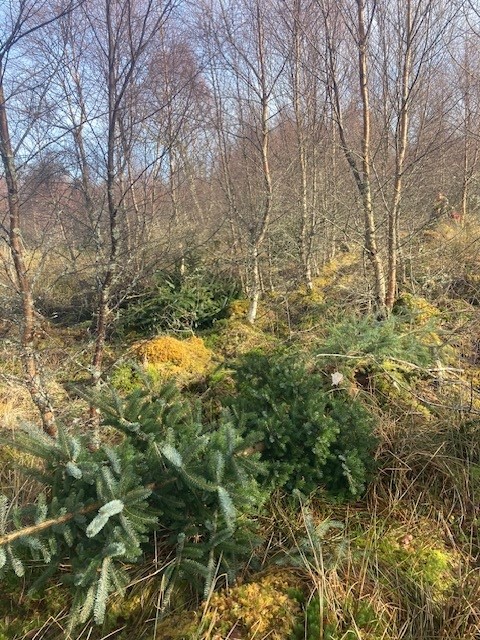 The Biodiversity Group is tackling a relatively small area in the first instance but hope that we can extend into other important areas as time and resource allows, working with the relevant landowners. Our hope is to be able to support the enhancement of biodiversity in these areas and that the community will enjoy these sites well into the future.
The Biodiversity Group is tackling a relatively small area in the first instance but hope that we can extend into other important areas as time and resource allows, working with the relevant landowners. Our hope is to be able to support the enhancement of biodiversity in these areas and that the community will enjoy these sites well into the future.
If you would like to be involved in the biodiversity group, then get in touch with Sarah at sarah@sfctrust.org.uk.

 Stratherrick & Foyers Community Trust,
Stratherrick & Foyers Community Trust,